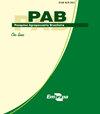巴西帕拉纳橄榄树叶子的生物活性化合物和抗氧化活性
IF 0.7
4区 农林科学
Q3 AGRICULTURE, MULTIDISCIPLINARY
引用次数: 0
摘要
摘要本研究对巴西帕拉纳本文章由计算机程序翻译,如有差异,请以英文原文为准。
Bioactive compounds and antioxidant activity of leaves from olive trees grown in Paraná, Brazil
Abstract The objective of this work was to evaluate the bromatological composition, bioactive compounds, antioxidant activities, and color of the leaves of olive cultivars Arbosana, Arbequina, Frantoio, Manzanilla, and Koroneiki in northwestern Paraná, Brazil. Leaves of each cultivar were collected for the experiment, which was carried out in a completely randomized design. The dry matter (DM) of olive leaves contains mostly carbohydrates (56.15 to 59.42 g 100 g-1 DM) and fibers (17.37 to 19.73 g 100 g-1 DM) in its bromatological composition. The total polyphenol content ranges from 13.27 to 22.81 mg GAE g-1, with cultivar Manzanilla standing out, and the flavonoid content from 6.50 to 7.65 mg QE g-1. Manzanilla shows the highest antioxidant activity of 93.56 and 78.15% in the DPPH and ABTS assays, respectively. When compared with the other cultivars, Manzanilla and Koroneiki have leaves with a higher green intensity and total chlorophyll content of 0.958 and 0.833 mg 100 mL 1, respectively. In the ABTS assay, there is a correlation both between total polyphenol content and antioxidant activity and between chlorophyll content and antioxidant activity. Olive leaves have characteristics that allow their application as an additive or ingredient for the development of food products with satisfactory antioxidant activity.
求助全文
通过发布文献求助,成功后即可免费获取论文全文。
去求助
来源期刊

Pesquisa Agropecuaria Brasileira
农林科学-农业综合
CiteScore
1.20
自引率
0.00%
发文量
45
审稿时长
9-18 weeks
期刊介绍:
Pesquisa Agropecuária Brasileira – PAB – is issued monthly by Empresa Brasileira de Pesquisa Agropecuária – EMBRAPA, affiliated to Ministry of Agriculture, Livestock and Food Supply. PAB publishes original scientific-technological articles on Plant Physiology, Plant Pathology, Crop Science, Genetics, Soil Science, Food Technology and Animal Science.
Its abbreviated title is Pesq. agropec. bras., and it should be used in bibliographies, footnotes, references and bibliographic strips.
 求助内容:
求助内容: 应助结果提醒方式:
应助结果提醒方式:


